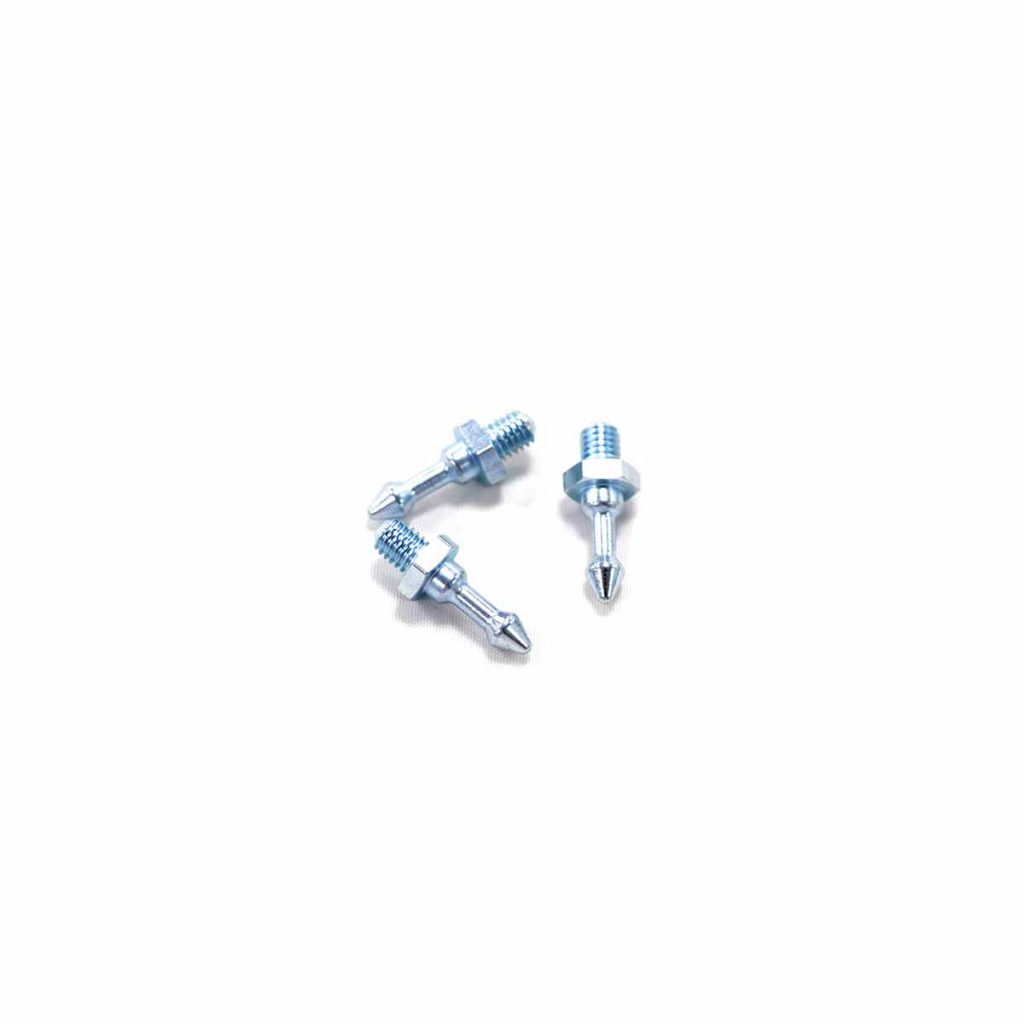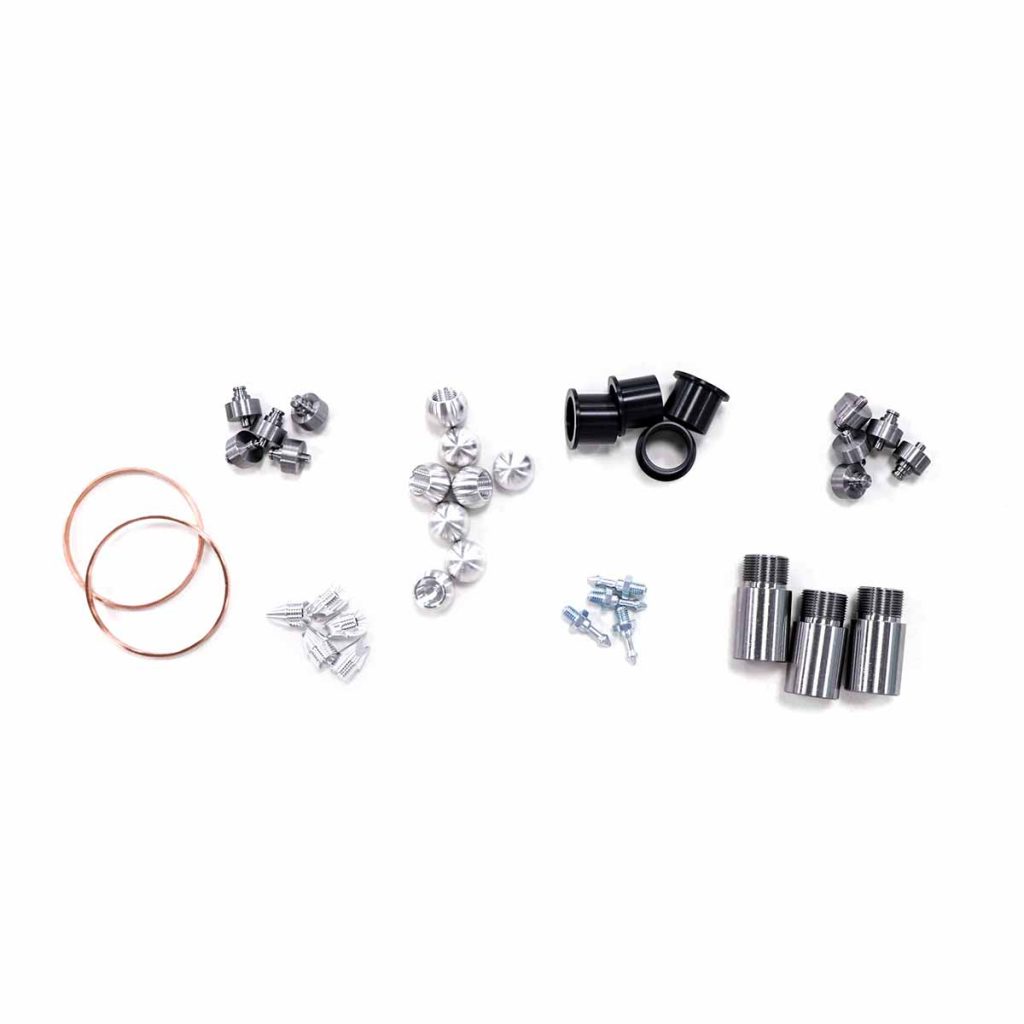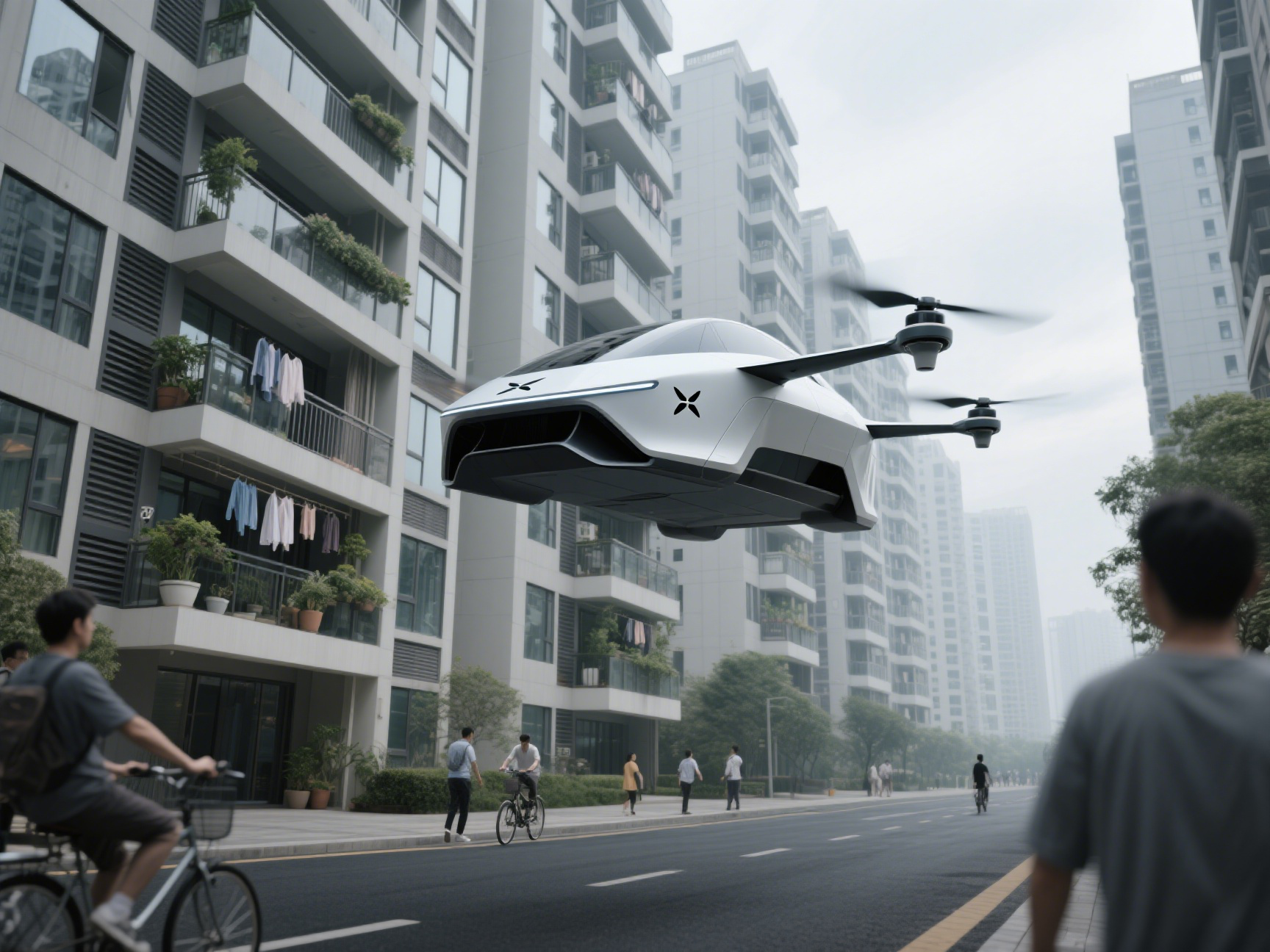Low altitude flying drones are rapidly transforming various industries, including logistics, surveillance, agriculture, environmental monitoring, and infrastructure inspection. These drones must navigate dynamic, low-elevation environments with a high degree of accuracy, responsiveness, and efficiency. The performance and reliability of such UAVs (Unmanned Aerial Vehicles) are critically dependent on the quality and characteristics of the components they are made of. Among these, lightweight CNC (Computer Numerical Control) components play a pivotal role in ensuring both flight efficiency and structural resilience.
Lightweight CNC components combine strength, precision, and reduced mass, resulting in a more aerodynamic and energy-efficient system. This makes them indispensable in modern drone manufacturing. In this article, we explore the detailed reasons behind the growing reliance on lightweight CNC machining in UAV development, focusing on aspects such as battery efficiency, turbulence mitigation, production scalability, regulatory compliance, and material selection.
Battery Efficiency: The Immediate Impact of Weight Reduction
Battery efficiency is one of the most significant limitations in drone design, especially for low altitude flying drones that perform frequent vertical maneuvers and hover-intensive tasks. These actions demand high bursts of power, and any additional weight significantly reduces flight time and operational effectiveness.
Lightweight CNC components help address this issue by minimizing the structural mass without compromising mechanical strength. Materials such as 7075 aluminum alloy and magnesium are extensively used due to their favorable strength-to-weight ratios. CNC machining allows these materials to be shaped with incredible accuracy, optimizing the component geometry to reduce unnecessary bulk.
Furthermore, the precision of CNC machining contributes to the uniformity and balance of the drone structure, which improves overall energy efficiency. For instance, finely machined rotor hubs and motor mounts reduce vibrational losses and mechanical drag, both of which are common energy sinks in drone flight.
Flight Stability: Navigating the Complexities of Low Altitude Airflows
Unlike high-altitude flights where airflows are relatively predictable, low altitude drones must deal with wind shear, urban thermal effects, and mechanical turbulence created by nearby obstacles such as buildings and trees. Stability and control in such environments are crucial for performance and safety.
CNC machining enables the production of symmetrical and geometrically optimized parts, which significantly enhances aerodynamic stability. Balanced components like propeller shafts, gimbal mounts, and airframe connectors allow for more responsive and stable flight control. Even small deviations from the ideal geometry can cause vibration, erratic motion, and increased energy consumption.
Additionally, the tight tolerances achievable with CNC machining ensure minimal deviation between design and reality. This is especially important for parts like rotor arms, where asymmetry can lead to instability during flight. By ensuring consistency, CNC machining supports the drone’s navigational software and control systems in maintaining accurate course adjustments.
Prototyping and Scalability: From Concept to Deployment
One of the defining strengths of CNC machining in the context of drone development is its scalability from rapid prototyping to low-volume production. Drone developers often iterate on multiple designs before finalizing a production-ready configuration. CNC machining supports this agile development cycle by enabling fast, repeatable, and cost-effective component fabrication.
In prototyping, design changes are frequent. CNC machining allows for quick adjustments without the need for new tooling, which is essential in industries where innovation cycles are short and competitive pressure is high. For example, a drone manufacturer might experiment with several variations of a camera gimbal mount to achieve the best balance between weight and stability. CNC machining can accommodate each of these iterations with minimal setup time.
When moving to small batch production, CNC processes continue to offer advantages in precision, material versatility, and quality control. This transition from design to deployment is smoother and faster with CNC machining, giving manufacturers a competitive edge in bringing new drone models to market.
Material Selection: The Foundation of Lightweight Design

Material selection is critical in drone engineering. The ideal materials must combine low density, high structural integrity, machinability, and environmental resistance. CNC machining supports a wide array of such materials, enabling manufacturers to tailor components to specific operational requirements.
Common materials include:
Aluminum Alloys (6061, 7075): Widely used for their lightweight nature, corrosion resistance, and mechanical strength. These alloys are particularly suitable for frames, brackets, and motor mounts.
Magnesium Alloys: Even lighter than aluminum, magnesium is often used in applications where every gram counts. However, its susceptibility to corrosion requires careful surface treatment.
Titanium: Known for its exceptional strength-to-weight ratio and corrosion resistance, titanium is favored for high-load applications such as landing gear and critical fasteners.
Carbon Fiber Composites: While not machined in the traditional sense, carbon fiber panels can be CNC-cut with high precision, offering unmatched stiffness and weight advantages for drone frames and propeller blades.
Each of these materials presents unique machining challenges, which CNC technology addresses through adaptive tool paths, coolant systems, and material-specific tooling strategies.
Payload Optimization: Expanding Functional Capabilities
The growing use of drones in delivery services, surveillance, and industrial inspection has raised the importance of payload capacity. Every gram saved in structural components can be reallocated to payload, extending the drone’s utility and value.
CNC machined lightweight components directly contribute to this optimization. For instance, using hollow-core or lattice-structured CNC parts reduces mass without compromising strength. These components can be designed with topology optimization software and precisely manufactured via CNC processes.
This capability is particularly important for delivery drones, which must carry packages over variable distances. By incorporating lighter structural parts, drones can extend their range, carry heavier loads, or operate for longer durations. In critical missions—such as transporting medical supplies or industrial tools—the benefits of increased payload capacity can be transformative.
Environmental Durability: Operating in Challenging Conditions
Low altitude drones often face harsh operating environments. This includes exposure to moisture, salt spray in coastal regions, temperature extremes, and particulate matter like dust or sand. Components must not only withstand mechanical stress but also resist environmental degradation.
CNC machining facilitates the use of corrosion-resistant materials and enables the application of protective coatings during the finishing process. Anodized aluminum, for example, offers increased surface hardness and resistance to oxidation, while titanium components remain virtually unaffected by most corrosive agents.
Additionally, the precision of CNC machining helps reduce ingress points for water and dust, contributing to better sealing and longer component life. This makes CNC components especially valuable in outdoor and industrial drone applications.
Regulatory Compliance and Safety Standards
As drone usage expands, so too does regulatory oversight. Compliance with safety and airworthiness standards is critical, particularly in sectors like aerospace, logistics, and public infrastructure.
CNC machining enhances a drone’s ability to meet these standards by producing components with consistent quality, traceable material origins, and certifiable tolerances. These attributes are essential for compliance with international guidelines such as those set by the FAA, EASA, and ISO.
For example, drones used in infrastructure inspection may need to comply with vibration tolerance regulations to ensure accurate sensor readings. CNC components ensure that all parts meet the mechanical reliability and repeatability required by such regulations. This reliability builds trust with customers and regulators alike.
Design Freedom: Enabling Innovation Through Manufacturing
CNC machining not only supports existing designs but also unlocks new possibilities. Engineers can experiment with geometrically complex parts, internal channels, and integrated mounting systems that would be impractical with traditional fabrication methods.
This design freedom allows for the integration of functionality directly into structural components. For instance, a drone arm might include internal wiring channels, sensor mounts, or aerodynamic shaping—all achieved through advanced CNC strategies such as 5-axis milling and high-speed cutting.
Such capabilities reduce part count, simplify assembly, and improve overall system integration. By reducing the number of joints and interfaces, engineers also decrease potential failure points, which enhances reliability.
Manufacturing Efficiency: Reducing Lead Time and Cost Over Time
Although CNC machining can appear costlier than mass production methods like injection molding, its long-term benefits in quality, flexibility, and durability often outweigh the initial investment. For startups and small-scale manufacturers, CNC machining provides an efficient path to market without the prohibitive costs of tooling and molds.
Modern CNC systems offer high repeatability, allowing for predictable production timelines. With digital twins and CAD-to-CAM workflows, the transition from design to manufacturing is seamless. This reduces lead times and allows for just-in-time production, which is crucial in fast-moving industries.
Furthermore, as demand scales, CNC machining can be integrated into hybrid manufacturing pipelines alongside additive processes or casting, providing a balance of speed and cost efficiency.
Advancing Drone Innovation with CNC Machining

The role of lightweight CNC components in the development of low altitude flying drones cannot be overstated. From improving battery life and flight stability to expanding payload capacity and ensuring compliance with safety standards, CNC machining is a cornerstone technology in the evolution of UAVs.
As the industry moves toward more specialized, capable, and mission-specific drones, the demand for precision, customization, and reliability will continue to grow. CNC machining meets these demands head-on, providing manufacturers with the tools to innovate faster, build stronger, and operate more efficiently.
For businesses seeking to gain a competitive edge in the drone sector, investing in lightweight, high-performance CNC components is not just a strategic choice—it’s a necessity.
When it comes to UAVs operating in low-altitude airspace, minor deviations in part geometry can snowball into major performance issues. Whether it’s a misaligned rotor shaft or a slightly warped mounting bracket, these imperfections can create instability, increase drag, and reduce overall flight efficiency. This is why the precision and repeatability of CNC machining are essential—not just preferred—for lightweight drone components.
Tight tolerances ensure that every rotor arm, gear housing, or motor plate fits perfectly without requiring post-machining adjustments. Especially in drone assemblies, where vibrations and aerodynamic forces interact, precision reduces mechanical wear, eliminates unnecessary movement between parts, and ensures consistent force distribution. This not only improves performance but also extends the lifespan of the drone—an important factor for businesses managing fleets of UAVs.
Moreover, repeatability means that once a prototype is validated, identical parts can be manufactured at scale with confidence. For B2B clients, this repeatability reduces quality control costs and strengthens the reliability of their end products, allowing them to meet contract terms or delivery timelines with greater assurance.
Lightweight Frames and Custom Fixtures: A Case Study in Design Optimization
Take, for example, the development of a lightweight quadcopter frame intended for last-mile delivery in urban environments. Designers must consider not just weight but also aerodynamic efficiency, material vibration damping, load distribution, and attachment points for modular accessories.
Using CNC machining, engineers can fabricate frames from aluminum 7075 or carbon-fiber-reinforced plates with high geometrical complexity—thickness-graded arms, ribbed crossbeams, and built-in shock absorption features. These design elements can be tested, validated, and iterated rapidly, without the constraints of injection molding or die-casting limitations.
Furthermore, CNC machining enables the creation of custom jigs and fixtures for assembly or testing. These fixtures ensure precise alignment of components, streamline production workflows, and help maintain high throughput during final integration—especially useful for startups transitioning from prototyping to small-batch production.
Integration with Advanced Technologies: How CNC Machining Supports Smart Drones
Today’s low-altitude drones are no longer just flying cameras—they’re autonomous platforms equipped with AI, GPS, lidar, RF systems, and real-time data transmission capabilities. These systems demand compact integration into a tight airframe without sacrificing heat dissipation or electromagnetic shielding.
CNC machining supports this integration by allowing engineers to embed functional geometries into structural parts. For instance, a machined aluminum belly plate might include recessed cavities for PCB placement, internal wiring channels, and built-in mounting holes for RF antennas—all precisely located to maintain balance and signal integrity.
CNC-machined heat sinks and component enclosures also help dissipate thermal loads from processors or ESCs (Electronic Speed Controllers). By using thermally conductive materials like aluminum or even copper, drones can manage internal temperatures effectively—especially during missions that involve long hover times or high-computational workloads such as mapping or 3D scanning.
Lifecycle Maintenance and Repair: Designing for Durability and Serviceability
For drone fleets operating commercially—such as those used in agriculture, logistics, or infrastructure monitoring—downtime is a direct cost. Ease of maintenance becomes just as important as initial performance. Here again, CNC machining proves its value.
Precisely machined parts ensure that replacement components fit exactly as intended, reducing time spent on field repairs or maintenance. Interchangeable modules—like gimbal mounts, motor plates, or battery trays—can be easily swapped thanks to standardization and tight machining tolerances.
Furthermore, high-quality materials like anodized aluminum or coated titanium resist wear and corrosion over time, even under harsh operating conditions. This extends component lifespans and reduces the frequency of replacement, ultimately lowering the total cost of ownership for B2B clients managing large UAV deployments.
Sustainability Considerations: Lightweight Design and CNC Machining’s Role
While drone technology inherently supports environmental goals—like reducing the carbon footprint of last-mile delivery—manufacturing practices must also align with sustainability objectives. CNC machining offers several eco-benefits that contribute to this broader mission.
First, lightweight CNC components reduce energy consumption during flight, which translates to longer mission times with smaller batteries. This directly contributes to reducing the need for frequent recharging and battery replacements—both of which have environmental costs.
Second, modern CNC machining processes allow for efficient material utilization and waste recycling. Aluminum and titanium scraps, for example, can be collected and reprocessed, minimizing landfill waste. Additionally, water-based coolants and closed-loop systems in CNC operations help reduce the environmental impact of production facilities.
From a design perspective, the ability to produce multifunctional components through CNC machining also reduces part count and material consumption, streamlining the bill of materials and simplifying logistics—important for companies committed to green manufacturing.
The Future of Drone Design: What’s Next for Lightweight CNC Components?
Looking ahead, the intersection of CNC machining and drone technology is poised for even greater synergy. Emerging trends include:
Generative design algorithms that use AI to create ultra-lightweight geometries, which can then be realized using 5-axis CNC machining.
Hybrid CNC-Additive processes, combining the strength of subtractive methods with the design freedom of 3D printing for internal lattice structures and complex topologies.
Smart materials, such as shape-memory alloys and CNC-machinable composites, enabling drones to adapt to environmental conditions or mission profiles.
Miniaturization, where precision micro-CNC machining allows for the development of compact UAVs for medical delivery, confined inspections, or tactical use.
These innovations will demand even higher levels of manufacturing precision, speed, and flexibility—all areas where CNC machining continues to lead. As the low altitude drone economy matures, manufacturers who embrace these technologies will stand out in a crowded, competitive market.
Final Thoughts: From Workshop to Sky—Why CNC Machining Is the Backbone of the Low Altitude Drone Revolution
Lightweight CNC components are not just accessories in drone design—they’re the core enablers of performance, efficiency, and innovation. For businesses entering or expanding in the low altitude UAV space, the advantages are clear: better battery life, improved payload ratios, faster development cycles, and enhanced reliability in demanding environments.
From material science and precision engineering to integrated design and field maintenance, CNC machining empowers drone developers to push boundaries, scale operations, and meet the growing demands of smart aerial systems. In an industry where every gram and every millimeter counts, CNC is not just a tool—it’s a strategic advantage.


